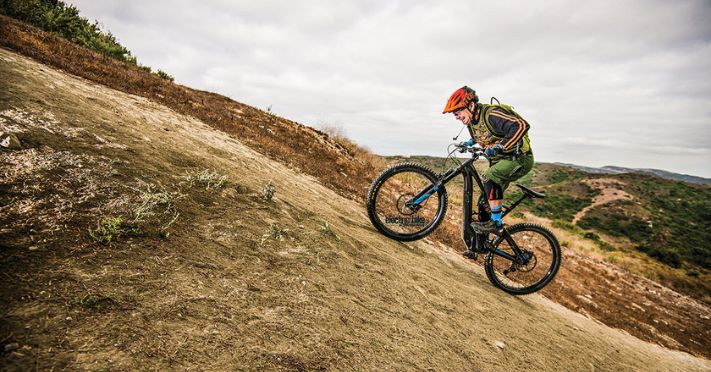One of the key benefits of an electric bike is offering a little extra kick to drive you up the most challenging hills you wouldn’t have dreamt of taking on. An e-bike motor offers extra power to go faster and put more power into your legs for those sheer climbs.
Master Hill Climbing On An E-Bike
Find a wheel: On long climbs, riders can save a little energy sitting on another rider’s wheel. In road biking, this is known as drafting and can have you feeling fresh for the final charge.
Nothing is quite as rewarding as crushing a tough climb to rip down some sweet singletrack. Riders are always asking us how to climb hills faster in hopes that there is some magical cure for the hard work that has to be done. There is no magical solution, but there are methods that help make the climbs a little more enjoyable and, of course, quicker.
1. Try Different Types Of Climbing
Instead of choosing the fire road every time, climb some of the less-traveled singletrack. Climbing singletrack will force you to get out of the saddle more and pay close attention to the trail. It will also give your ride some much-needed variety and break up the monotony of boring fire-road grinds.
2. Breathe Properly
Your muscles need oxygen to keep working properly, and good breathing is important on climbs. Focus on inhaling and exhaling consistently, and it’s okay to exaggerate the sound and motion. You don’t have to just breathe in and out of your nose; using your mouth is fine as long as you have a steady rhythm. If you don’t have a heart-rate monitor, invest in one.
3. Find The Right Pressure
The right tire pressure will make all the difference on steep climbs. There is nothing like pushing up a steep punch only to have your rear tire spin out and cause you to lose all momentum. Dial in your rear tire pressure, and don’t be afraid to run a little lower pressure if you are riding steeper trails.
4. Get Comfortable On The Bike
Climbing causes plenty of physical discomfort, so spend some time dialing in your fit. Make sure your saddle is set up properly, and try different hand positions. Road bike bars are curved to allow for more hand positions for more comfort, so moving your hands around on the bars can give you a fresh feeling on long grinds.

5. Get Out Of The Saddle
The best way to conquer most climbs is to stay seated and spin it out, but getting out of the saddle can give your butt a break and use different muscles. Standing will cause your heart rate to increase but also give you an extra jolt of momentum.
6. Use Your Suspension
Suspension designers know that climbing hurts and have built-in settings to help riders get to the top of the mountain. Use the settings on your suspension to stiffen up the platform to allow for better power transfer. Use the stiffest setting on the front and rear if you’re on a fire road. If it’s more technical singletrack, use the middle settings to ensure your tires stay on the trail when crawling over rocks and roots.
7. Distribute Your Weight Properly
It’s usually best to distribute your weight evenly over the bottom bracket to properly weigh both tires. On steep sections of the trail, lean forward to the nose of the saddle to keep the front end from wandering. This will allow you to leverage your pedals to grind up the steepest sections.
8. Find A Good Cadence
Sometimes you need to grind or muscle your way up a steep pitch, but generally, finding a smooth, consistent cadence is best. Some of the best riders in the world will spin between 90–100 revolutions per minute, keeping their leg speed high and momentum moving forward. This high rpm rate might make you feel worn out at first, but it will eventually pay off if you nail it down.
9. Use Your Arms
Mountain biking is a full-body workout that sometimes requires you to use your upper body as much as your legs. Pushing the bike side to side when grinding up steep climbs is okay, as this uses different muscles and gives more power to the pedals.
Feel the burn: It doesn’t matter how strong or fast you are; climbing will always hurt. Find ways to embrace the pain and stay mentally tough to focus on getting to the top instead of how much your legs hurt.
10. It’s A Mental Game
The best climbers in the world are also the toughest riders mentally. They have an uncanny ability to focus on getting the work done instead of focusing on the pain. It might sound silly, but when you’re climbing, find a happy place mentally that will take your mind off the lactic acid burning in your legs. Everyone hurts on climbs, but not everyone shows it.
11. Keep Your Legs Moving
This relates to cadence but is key to climbing technical sections. As long as your legs are moving, so are your wheels. Momentum is critical when crawling over roots and rocks on steep sections of the trail.
12. Set Goals
It’s easy for most riders to sit in their comfort zone when climbing. But if you push yourself outside that range a little bit at a time, the results can be a total game-changer. Set small goals, focusing on going a little faster each time.
Use your weight: On steep pitches, climbing is all about proper weight distribution. Keep your body forward to keep the front wheel from wandering while applying pressure to the rear wheel to maintain traction.
13. Relax
When you’re working hard, it’s easy to tense up. Relax your upper body when you’re not standing out of the saddle, and keep your neck and shoulders loose. Tensing up will use up energy that may come in handy later on.
14. Try Some Intervals
It’s no secret that intervals hurt and aren’t just for racers. They’re one of the most effective ways to get stronger on the climbs. Try sprinting out of the saddle every couple of minutes to get your heart rate up.
15. Climb More Often
It sounds painfully obvious, but the most effective way to get better on climbs is to do them as often as possible. As with descending or riding in general, the more time you spend climbing, the more your body will adapt and get stronger. It’s an acquired taste you will initially hate and won’t understand how anybody could enjoy it. It will soon become tolerable, and eventually, you’ll reach the point where you can’t live without it.
Ready to get out and hit the trails on an e-bike? Check out our guides to the best electric mountain bikes and best all-terrain e-bikes and explore the benefits of mountain e-bikes.




